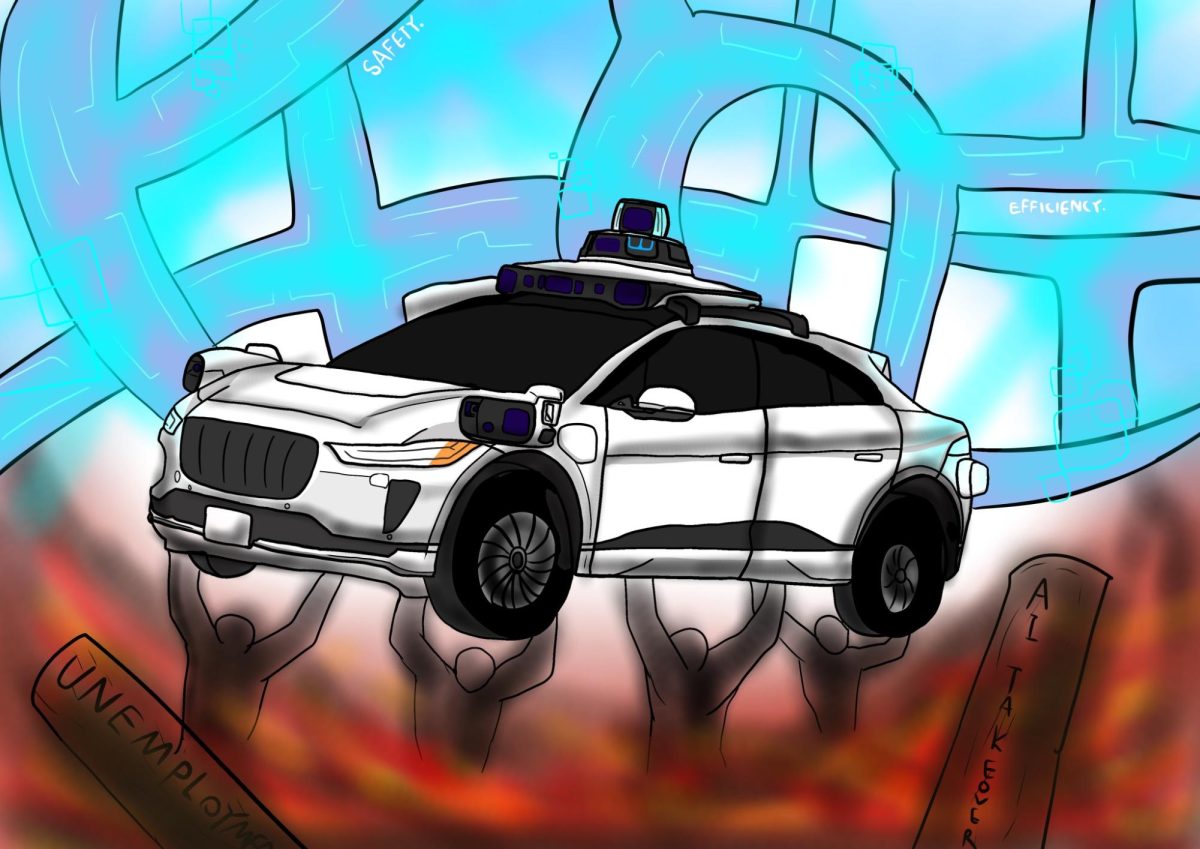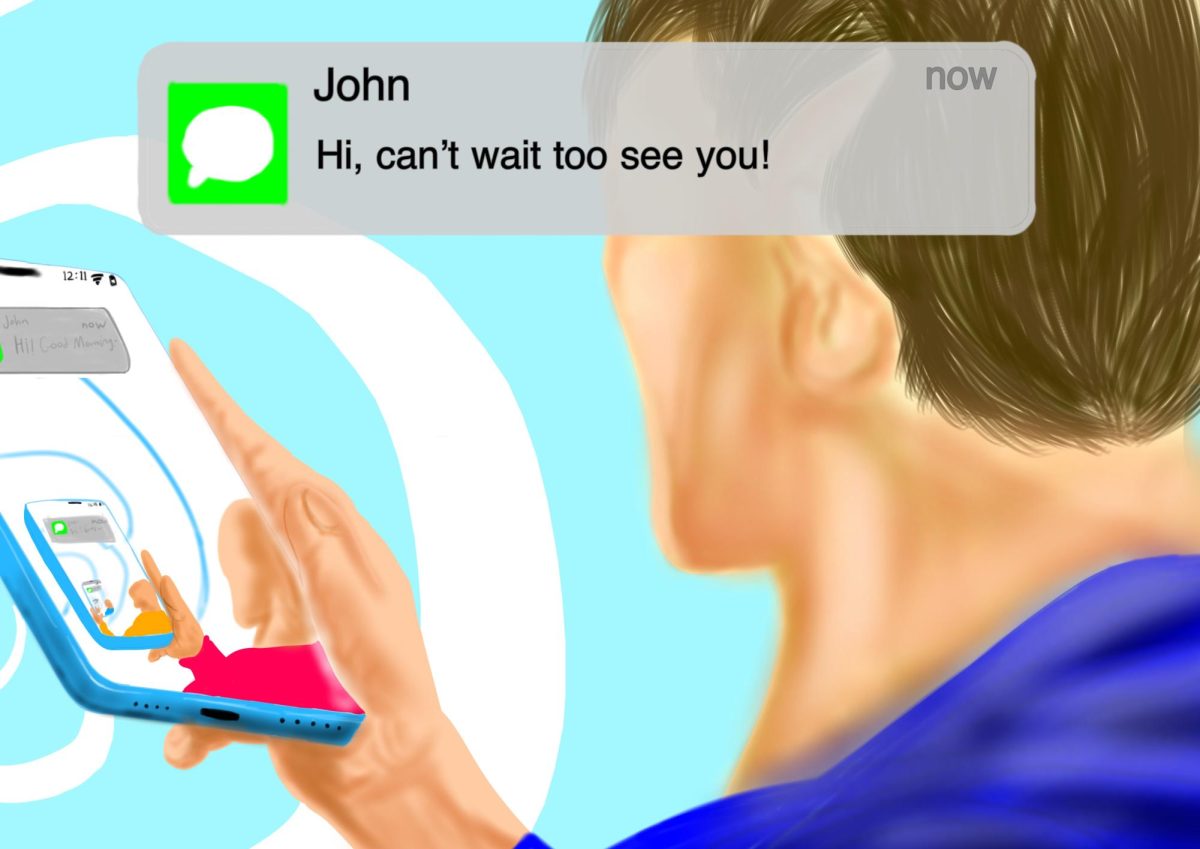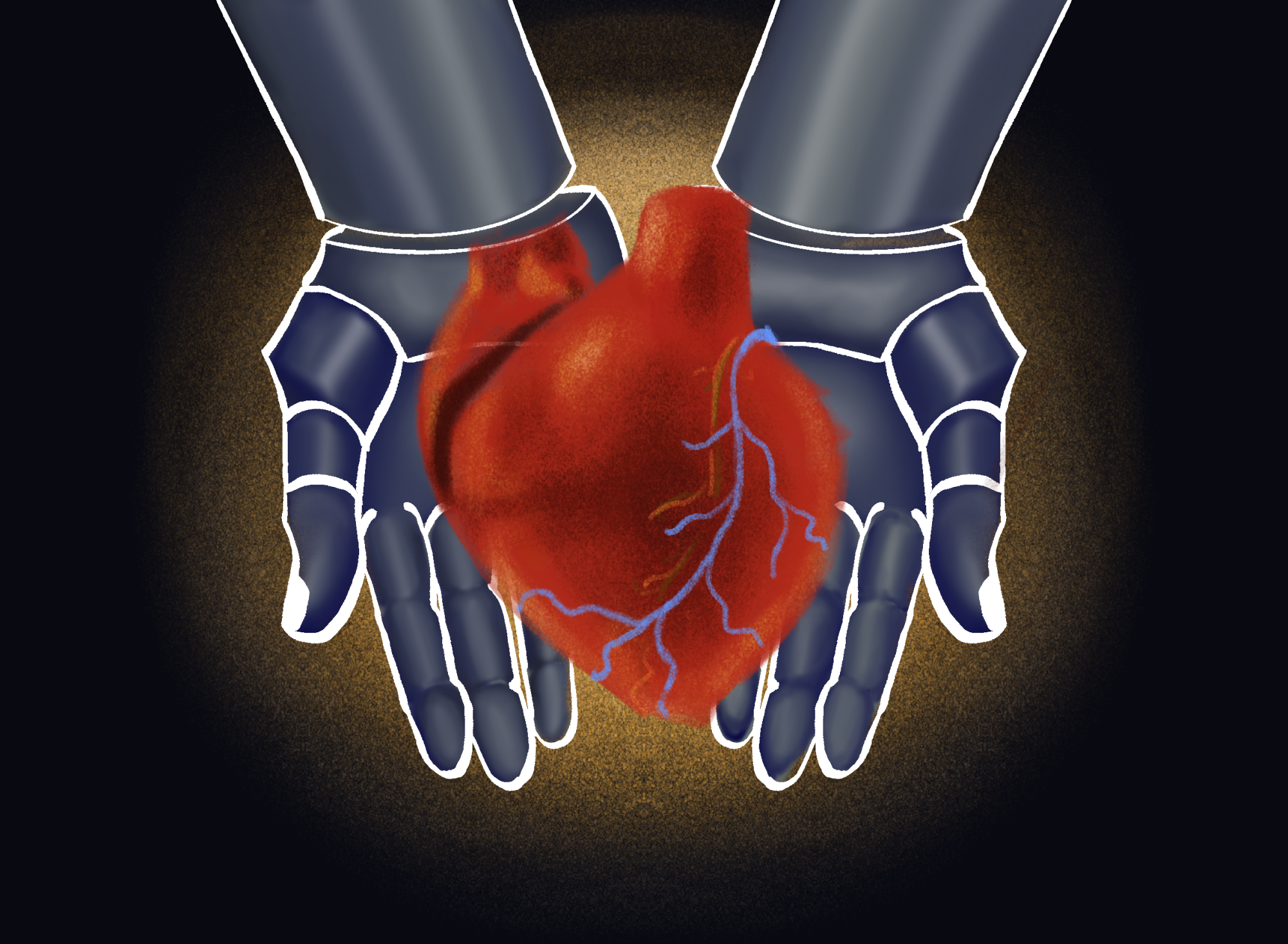With a click of a button, your Uber appears, and you hop in. However, you find that the brain behind the vehicle is completely automotive, a machine. You see the steering wheel turn by itself, the car gives an indicator with no hand ghosting near it, and the sound of the engine revving as the speed increases. The ride is silent, no exchange of words, simply the singular motive of getting you to your destination. This is what self-driving cars offer … but what are the broader implications of the ghosted, automated driver?
According to Brookings, a nonprofit public policy organization, “self-driving cars promise enormous benefits such as greater road safety … a more efficient, less costly transportation system … and a smoother, more controlled eco-driving style compared to human drivers.”
Based on a study published by Nature Communications Journal, which analyzed accident data from 35,113 human-driven vehicles and 2,100 autonomous driving systems, self-driving cars were less susceptible to accidents. However, this stands only for certain situations. During dusk, dawn and during turns, research found that the autonomous cars were more likely to be in an accident than human-driven vehicles. The safety and confirmation of self-driving cars is not guaranteed, but technology is on its road to improving the quality of the vehicles themselves. As stated by Uber: “We imagine a future where autonomous vehicles and human drivers seamlessly work together to make transportation more reliable, affordable, sustainable, and safer.” As we glance towards the future, technology will continue to improve, and hopefully enhance the safety and efficiency of these vehicles.
Yet the broader issue does not lie in safety: it can potentially eliminate millions of jobs in transportation. The fallout from the increased autonomous vehicles could be more damaging to society than risks of passenger safety. According to Forbes, “Brookings estimates that self-driving cars could displace millions of jobs in the United States alone.” This extends past basic Uber vehicles, but to industries such as “truck stops, gas stations and car washes” as the desire for “human intervention” declines.
More specifically, the Center for Global Policy Solutions states that “more than four million jobs will likely be lost with a rapid transition to autonomous vehicles,” including “delivery and truck drivers.” This advertently puts a toll on our economy, as job security and demand for workers decline. While autonomous cars won’t entirely eliminate work, increased technological improvements of AI and robots broadly eliminates the possibility of an economy primarily based on only people being paid for labor. However, job risk is selective, because AI cannot replace tasks like medical care, but hurts those interested in pursuing data entry, customer service and telemarketers.
While evaluating the ethicality of self-driving cars, it’s important to glance at its impact on our broader economy. Other than the physical safety of it, we must continually consider: how it could inadvertently harm other people? And what can we do to ensure the ethicality of the new technology?










